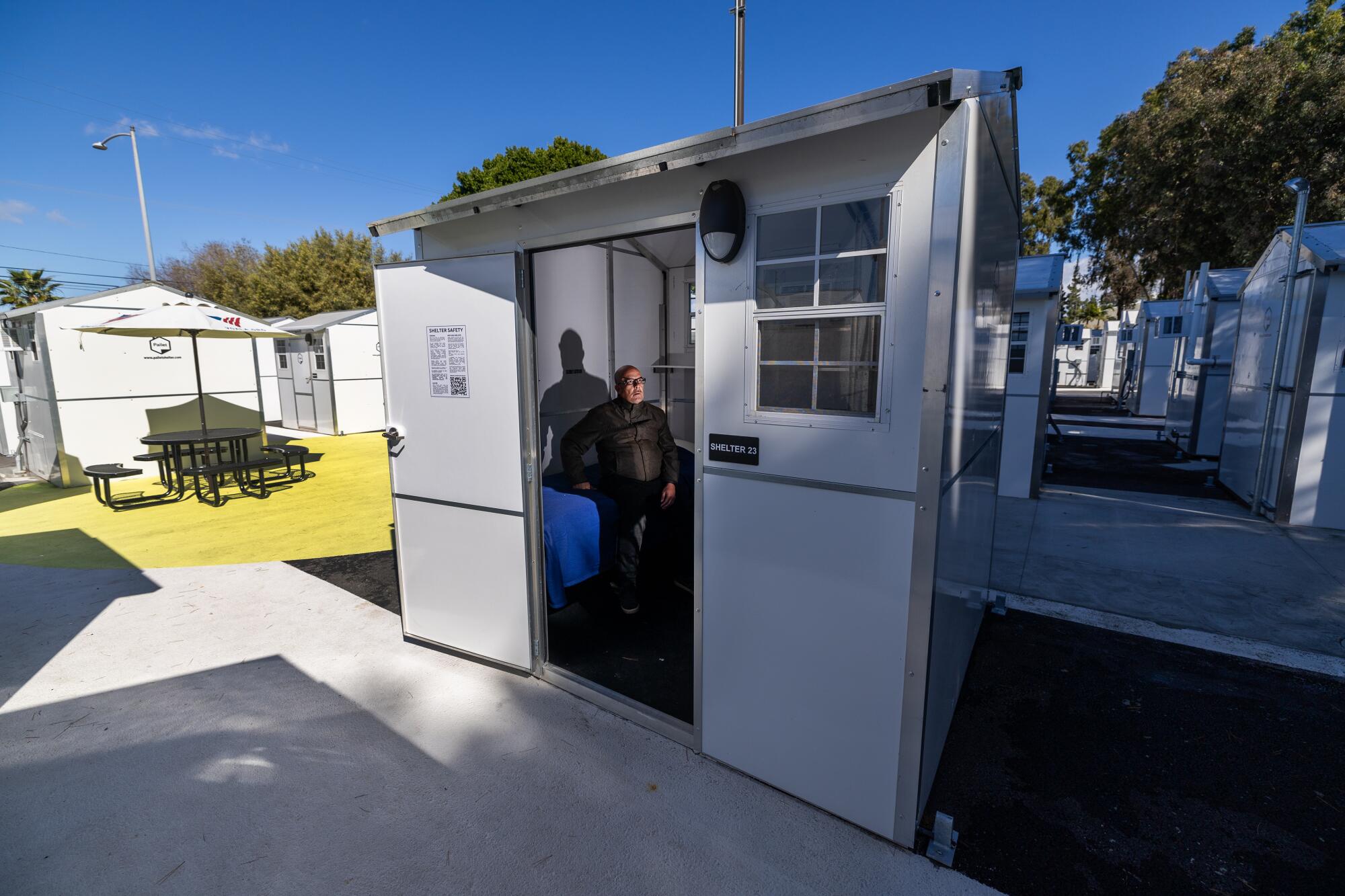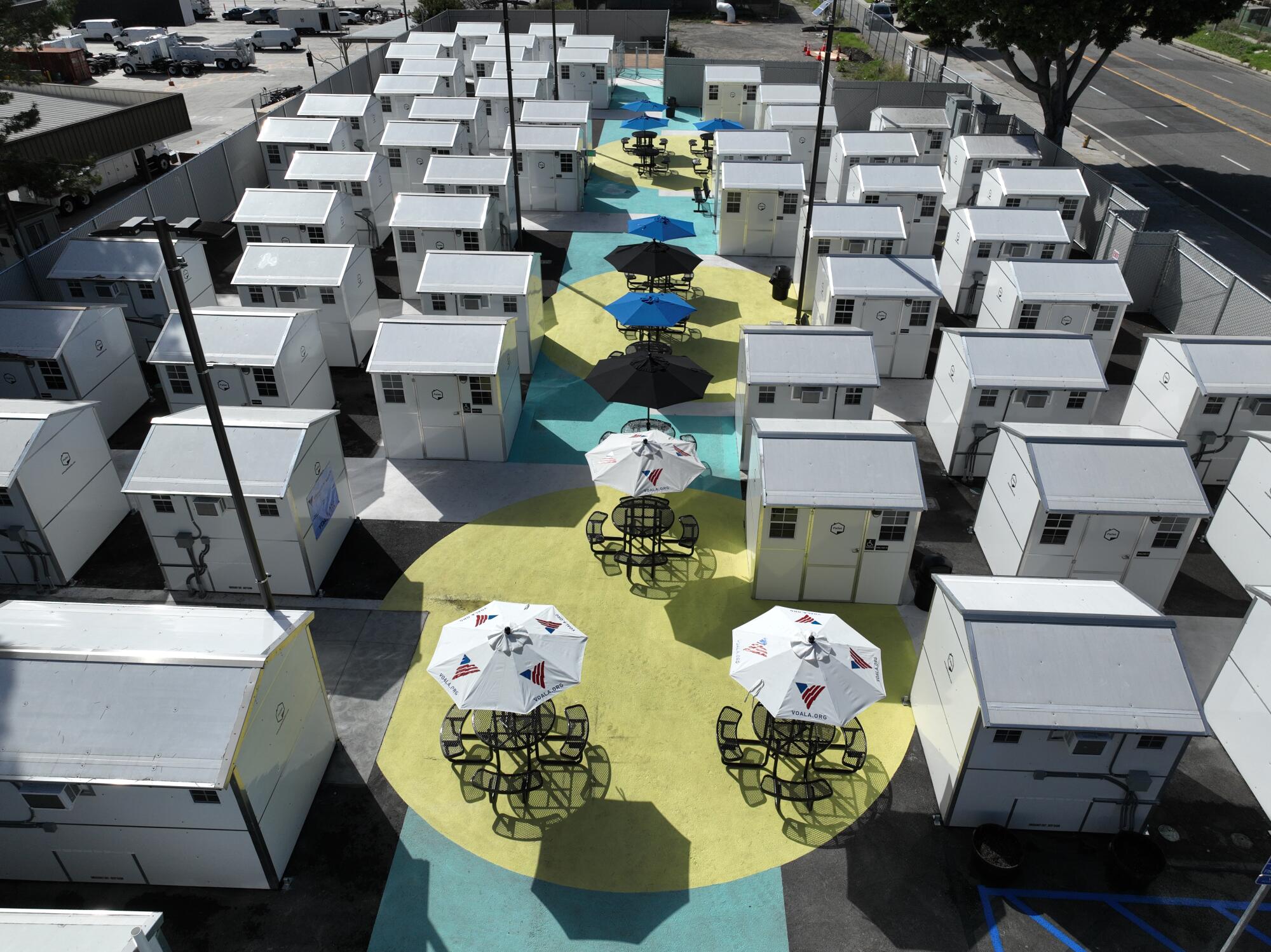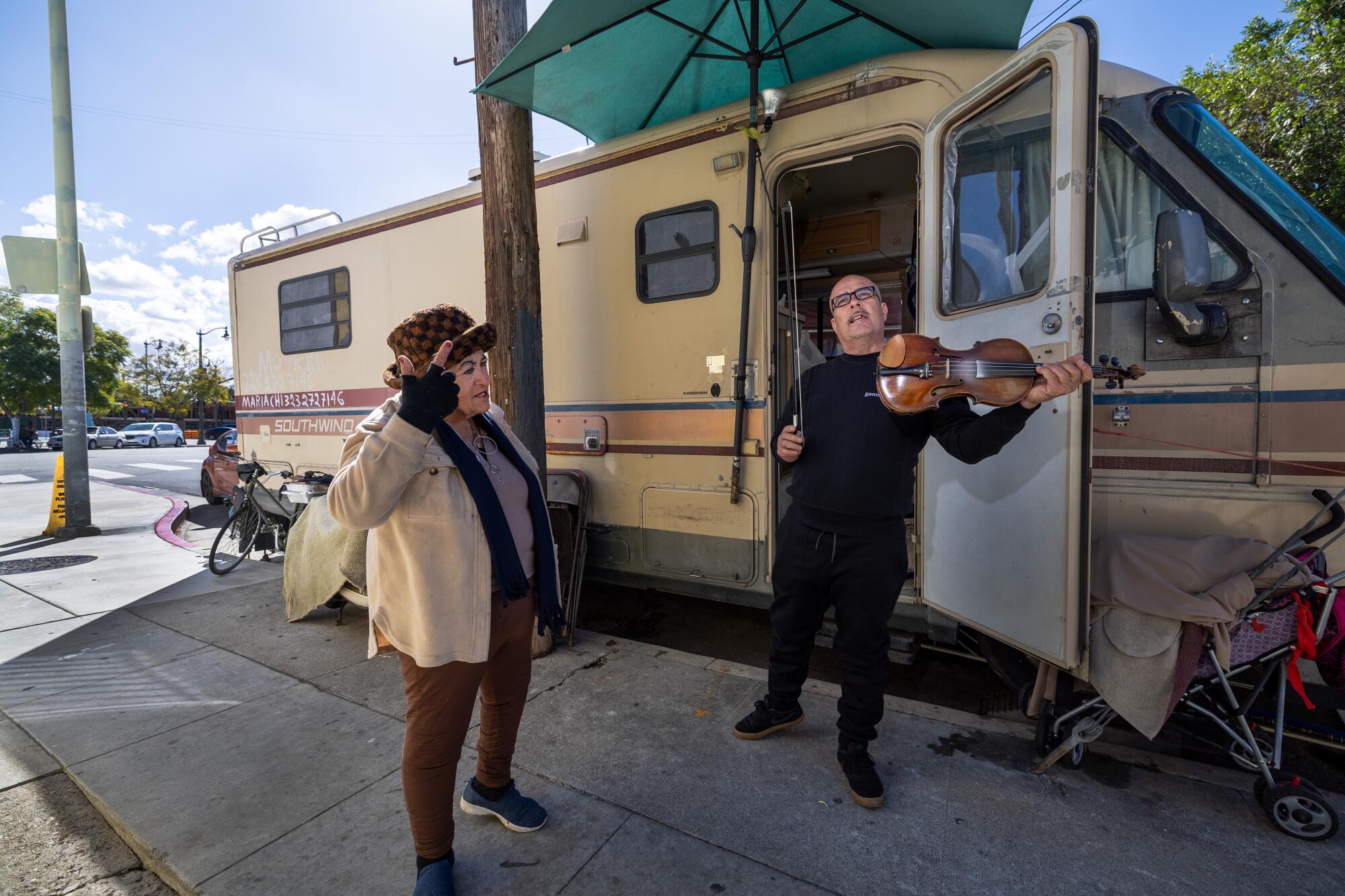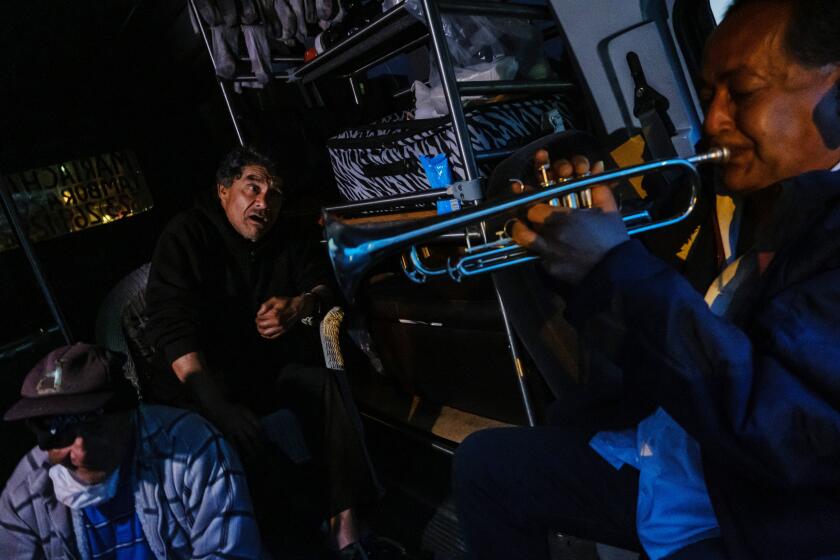
- Share via
For three years, mariachi musician Ramiro Becerra has been living in a motor home near Mariachi Plaza in Boyle Heights.
He sometimes bathes in the restroom at a nearby park. He lives on eggs, ham, rice, beans and potatoes, spending what little money he makes to run a generator so the food in his small fridge doesn’t spoil. To find work, he painted “Mariachi” and his telephone number on the back and sides of his 1990 Chevy Southwind.
“This is a very sad and lonely life,” said Becerra, 56, who sings and plays the violin. “It’s the kind of life that sometimes makes you feel like you don’t want to keep on living.”

Next Thursday, Becerra will move into a “tiny home” village that will provide a roof and a bed for 144 unhoused people, including more than two dozen other mariachis whose livelihood was hard hit by the pandemic.
Los Angeles City Councilman Kevin de León, who represents the area, said he reserved a section in the village, on Mission Road in Boyle Heights about a mile from Mariachi Plaza, for the musicians.
“There were mariachis whose exclusive stream of revenue was singing. That was their job full-time. But there were no fiestas, no birthday parties, no cumpleaños, quinceañeras, no bodas, fiestas, bar mitzvahs, nothing, zero, zilch,” he said of the pandemic at a ribbon cutting ceremony Thursday.
He added: “That means you have no money to pay the rent, you have no money to put food on the table.”
Many mariachis started living in their cars, while others moved in with family in places like Downey, Bellflower, Pomona or Pacoima, De León said, making it hard for them to get to Mariachi Plaza.

At the Boyle Heights Tiny Home Village, which cost $4.8 million, each unit is about 64 square feet and includes a retractable bed, shelves and air conditioning, with shared restrooms and laundry facilities. There is no time limit to the residents’ stay. De León said the goal is to eventually move them into permanent housing.
“This is not the final resting stop ... it’s one huge step forward in providing dignity and respect,” he said. “Quite simply, it’s putting a roof over their head for right now.”
The city began building tiny homes three years ago in response to a federal lawsuit alleging that it had done too little to get homeless people off the streets. The tiny homes provide privacy for unhoused people who are often reluctant to live in group shelters. Some have criticized the program for the cost and the small size of the units, but city officials say it is a temporary solution amid a shortage of permanent housing.
De León said the Boyle Heights project was built on a city-owned former mulch yard, reducing costs. It is the 13th tiny-home village in the city, with several more in the works.
Mariachis play love songs at wedding receptions, songs about Mexico at festivals; they sing birthday songs and morning serenades. They subsist on joy, but they also experience sadness. Then came the novel coronavirus, which choked off almost every source of revenue.
For nearly a century, mariachis have gathered at the historic plaza in Boyle Heights in hopes of finding work. Their problems predated the pandemic, as they struggled with high rents, gentrification and renovations of the plaza and the Boyle Hotel, a historic brick building that many called home.
In January, city officials found about 30 unhoused mariachis in the area. They placed many in the tiny homes and are trying to help others they didn’t locate until later.

Becerra was key to the outreach effort. He recalls rushing over to his motor home, grabbing his bicycle and riding around to tell other mariachis to sign up for the housing.
“I was all over the place,” he said. “I would show up and say, ‘Go to the plaza. The city has little houses for us. Let’s go, let’s go.’”
Becerra arrived in the U.S. from Jalisco, Mexico, in the late 1980s. For more than 30 years, he showed up at Mariachi Plaza looking for work. He said he was making about $300 a week, until the pandemic hit and the jobs dried up.
Three years ago, unable to keep up with rent, Becerra purchased the $8,000 motor home with the help of his children.
“I parked it next to the plaza, so if I get a job, I can rush back over here and change,” he said. “I let some of the mariachi women use my motor home as a place where they can change into their outfits, too.”
Now, he makes $100 on a good day, while sometimes going without work for several days.
At the ribbon cutting ceremony, as a mariachi band played “El Rey” by Jose Alfredo Jimenez, Becerra and De León stood side by side, singing along.
With money and without money
I always do what I want
And my word is the law
I have no throne or queen
Nor anyone who understands me
But I’m still the king.
More to Read
Sign up for Essential California
The most important California stories and recommendations in your inbox every morning.
You may occasionally receive promotional content from the Los Angeles Times.















